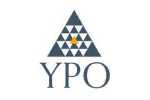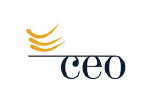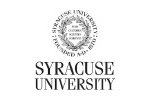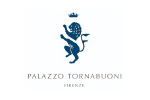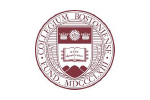


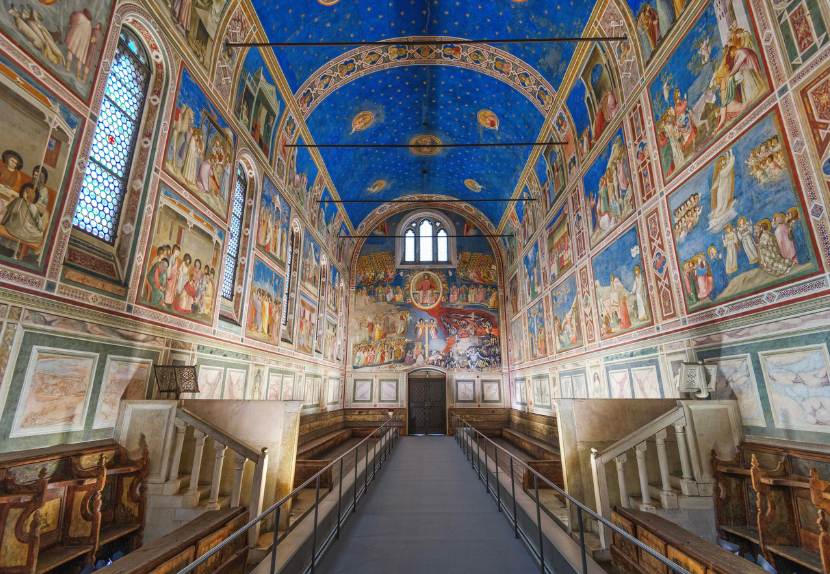
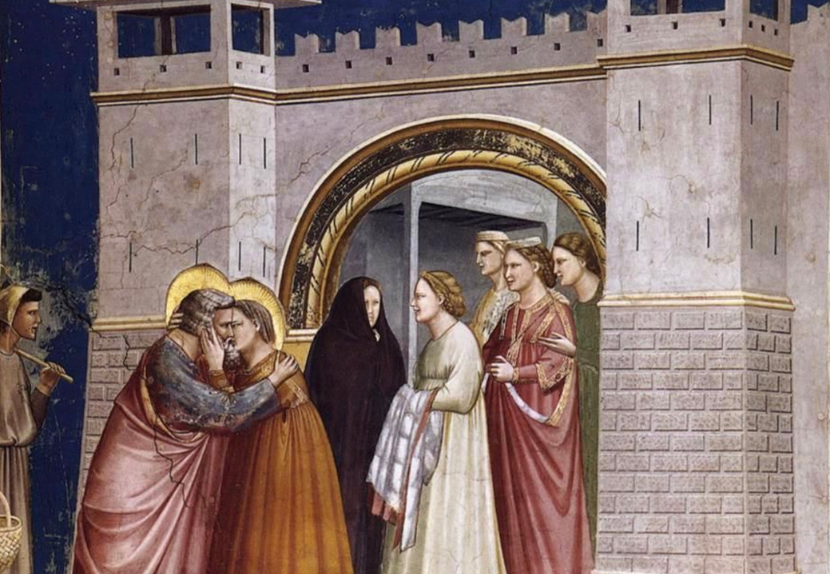

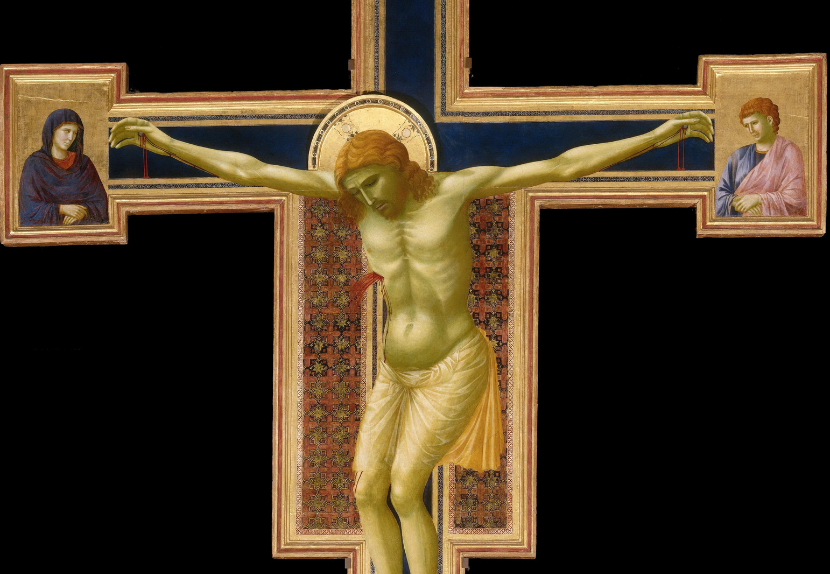
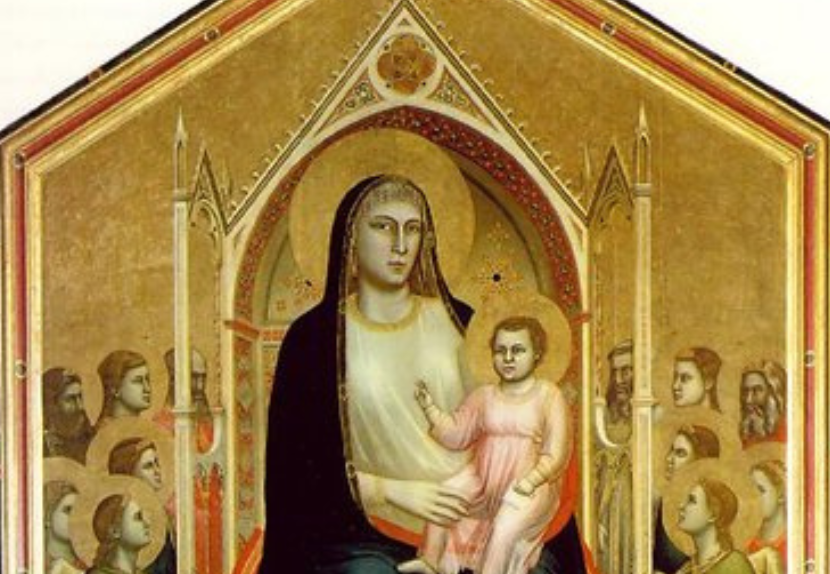
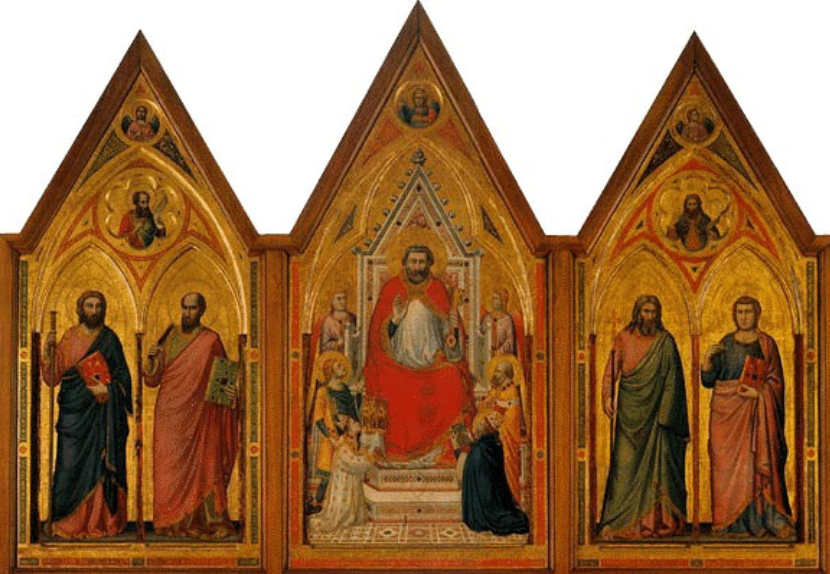
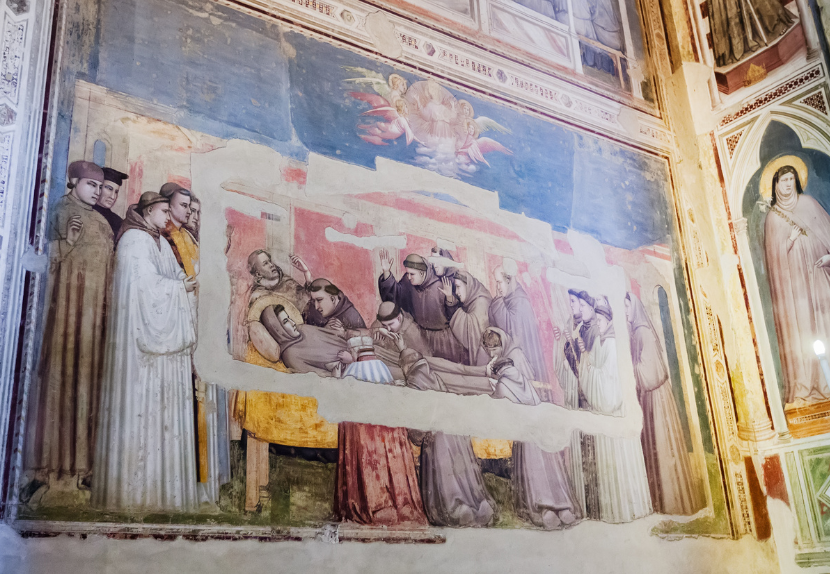
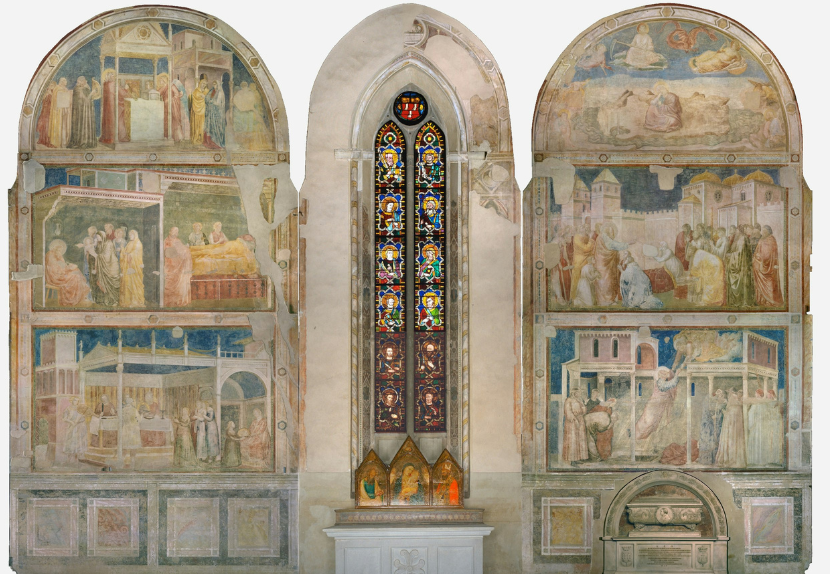
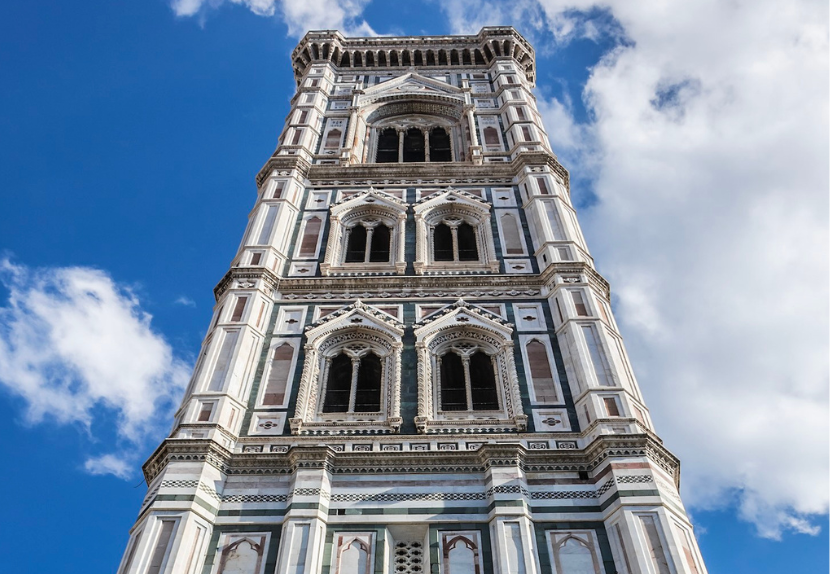

BUNDLE ONLINE ART HISTORY COURSE
“Giotto: The Most Excellent Painter”
LIVE ART HISTORY COURSE with Dr. Rocky Ruggiero
Dates & Times:
Mondays & Wednesdays
Part 1: December 2, 4, 9, 11, 16 and 18, 2024
Part 2: January 27 & 29 and February 3, 5, 10 & 12, 2025
11:30am – 12:45pm ET | 8:30 – 9:45am PT |
4:30 – 5:45pm London
ONLINE ART HISTORY COURSE
“Giotto: The Most Excellent Painter”
Course Description:
Few artists in history have had an impact on their fields the way Giotto did in the 14th century.
Giorgio Vasari claimed “For after the many years during which the methods…of good painting had been buried…it was Giotto alone who…rescued and restored the art…” After nearly a millennium in which Byzantine-style pictorial forms dominated western art, Giotto, like his teacher Cimabue before him, turned to Nature as his guide. Giotto introduced convincing 3-dimesional settings, movement, drama, emotion, psychology and sculptural modeling to a world of painting that was by dominated by flat, abstract icons. Simply put, Giotto revolutionized painting. His innovations became the foundation of Western painting for centuries to come. The influence of Giotto can be seen in the works of artists such as Donatello, Masaccio, Leonardo da Vinci, Michelangelo, Raphael, Caravaggio, all the way up to Picasso, Rothko and Frank Stella. Giotto was, in the words of a 14th-century contemporary, the merchant Giovanni Villani, “the most sovereign master of painting in his time.”
Course Objectives:
Virtual Classroom: Full access to an online educational platform with videos of recordings, syllabus, and readings.
Credits: Certificate of Completion
Location: LIVE INTERACTIVE ON-LINE ART HISTORY LECTURES
Optional Readings:
Information will be provided 2 weeks before the start of the course.
Complete syllabus will be provided upon registration.
Monday, December 2:“Cimabue held the field…”
In Canto XII of Purgatory, Dante’s character Oderisi clams
In painting Cimabue thought he held the field
but now it’s Giotto has the cry,
so that the other’s fame is dimmed.
The late 13th-century painter Cimabue is generally considered the first to attempt, but not wholly succeeded in breaking with the Byzantine style. He is also traditionally considered Giotto’s master. This lecture will explore the artistic oeuvre of Cimabue and his relationship to Giotto.

Wednesday, December 4: The Scrovegni Chapel
Giotto’s 14th-century fresco cycle in the Scrovegni Chapel in Padua, Italy, is one of the defining decorative complexes in Western Art. This lecture will explore the history, patronage and overall decorative program of the chapel.

Monday, December 9: The Scrovegni Chapel 2
In his Scrovegni Chapel frescoes, Giotto transforms iconic and sacred subjects – the “Lives of the Virgin Mary and Christ” – into a very human story – or what I like to call the “visual vernacular”. His paintings are full of expressive character types, landscapes, color and complex visual arrangements. This lecture will look specifically at the scenes depicting the “Life of the Virgin Mary and Childhood and Mission of Christ,” and how Giotto is able to tell a visual narrative that reads very much like a modern motion picture.

Wednesday, December 11: The Scrovegni Chapel 3
This lecture will examine the final series of scenes in the Scrovegni Chapel depicting the “Passion of Christ.” Giotto is able to evoke sounds and smells, emotions and expectations, humor and terror, suspense and surprise. Among these scenes are the “Kiss of Judas” and the “Lamentation” which are celebrated as two of the most powerful and compelling paintings in the history of art.

Monday, December 16: The Crucifixes
Throughout his career, Giotto painted as many as five “Crucifixes” on shaped panels. Three of the “Crucifixes” are in Florence, and the earliest of these sat on the rood screen in the Dominican church of Santa Maria Novella. The two remaining “Crucifixes” are in Padua and Rimini and are not accepted by all as being works by Giotto. This lecture will examine all of the “Crucifixes” associated with Giotto, how they fit into the artist’s oeuvre and how they would influence later interpretations of the subject.

Wednesday, December 18: “Giotto, Non-Giotto” – The Assisi Question
Vasari’s attribution of the “Life of St. Francis” frescoes in the Upper Basilica of San Francesco in Assisi to Giotto remained relatively unchallenged until 1937, when a major exhibition on the painter took place in Florence to commemorate the 6th centennial of his death. The exhibition inspired an art historian to publish an article entitled “Giotto, Non-Giotto” in 1939 posing doubts about Giotto’s authorship and igniting a controversy about the frescoes that has endured for nearly a century.
Monday, January 27: Cimabue, Duccio, and Giotto – Altarpieces for the Virgin Mary and St. Peter (1)
Giotto’s most celebrated altarpiece is the “Ognissanti Madonna” which once sat on the high altar of the Florentine church of the Ognissanti. Working against the Byzantine conventions of the day, Giotto was able to create an image of Mary enthroned that is both naturalistic and majestic. This lecture will examine Giotto painting and compare it to two other contemporary altarpieces by Cimabue and Duccio which sit in the same room of the Uffizi Galleries.

Wednesday, January 29: Cimabue, Duccio, and Giotto – Altarpieces for the Virgin Mary and St. Peter (2)
Around 1320, Giotto was called to Rome by Cardinal Giacomo Gaetani Stefaneschi to paint an altarpiece for the old Basilica of St. Peter. The painting, known as “The Stefaneschi Altarpiece” was located either on the high altar or the canon’s altar of the basilica. Presenting a complex iconography on both sides of the painting celebrating Saints Peter and Paul – patron saints of Rome – and Jesus Christ, Giotto created one the richest and most celebrated altarpieces of the Middle Ages.

Monday, February 3: The Bardi Chapel
Between 1317 and 1337, Giotto painted the walls of the two principal family chapels in the Basilica of Santa Croce in Florence. The Bardi Chapel contains six scenes from the “Life of St. Francis,” with a seventh scene – the most important of St. Francis’ life: “St. Francis Receiving the Stigmata”- painted above the entrance of the chapel. Giotto’s paintings reflect the hand of a mature master who continued to innovate and produce paintings that can move audiences even centuries later.

Wednesday, February 5: The Peruzzi Chapel
The fresco cycle in the Peruzzi Chapel was either produced simultaneously with or shortly after the completion of the Bardi Chapel. Here Giotto painted scenes from the lives of St. John the Baptist and St. John the Evangelist, in honor of the chapel’s patron Giovanni Peruzzi. Executed in the “a secco” technique of mural painting, the state of conversation of the six paintings is not optimal, but still reveal the visionary work of Giotto in the last years of his life.

Monday, February 10: Late Works
In the last decade of his life, while continuing his work in the Bardi and Peruzzi Chapels in Santa Croce, Giotto also executed the altarpiece of the Baroncelli Chapel in the same church. In 1329, he was called to Naples by King Robert of Anjou. Then in 1334, he was named capomaestro of the “Campanile” (Florence Cathedral bell tower), where he worked until his death in 1337. This lecture will explore Giotto last years and the extant works that he produced in this period.

Wednesday, February 12: Giotto’s Legacy
Giotto’s immediate followers – Taddeo and Agnolo Gaddi, Bernardo Daddi, Giusto de’ Menabuoi, Guariento, Altichiero, Jacopo Avanzi – were to carry on his legacy for the rest of the 14th century, followed by Renaissance painters such as Masaccio and Fra Angelico into the 15th century and beyond. In fact, the artistic inheritance that Giotto left behind is still very much manifest in western art today.







